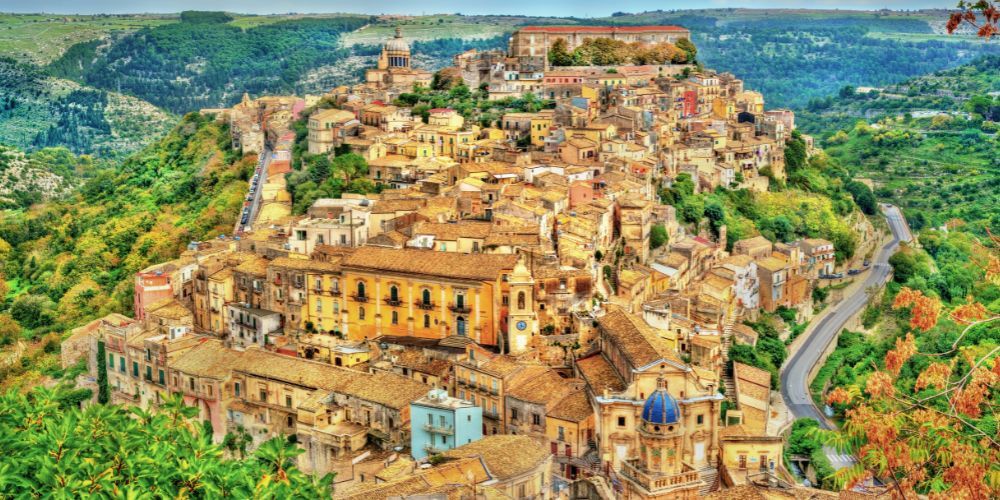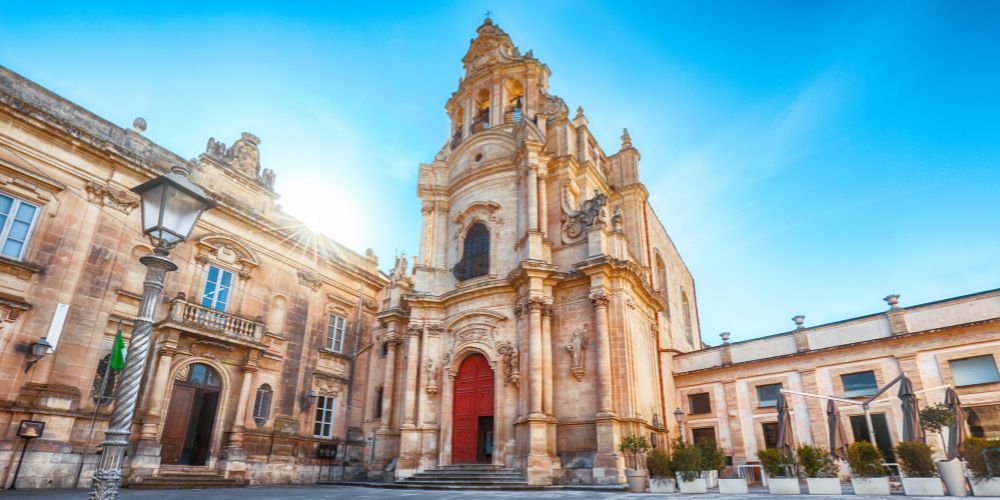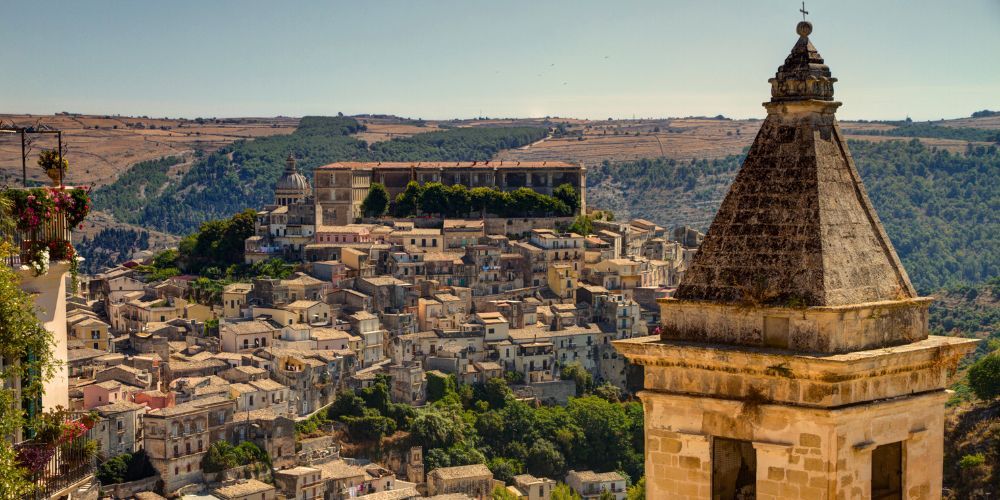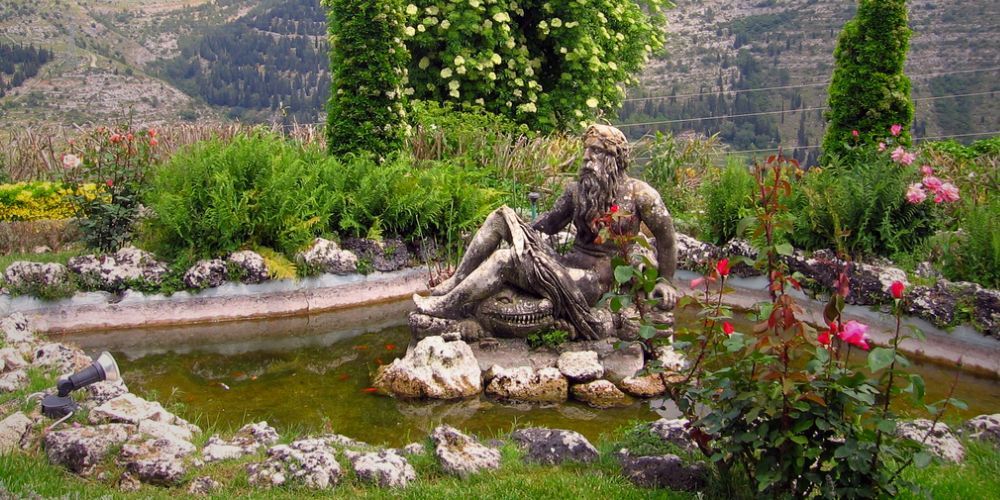There are destinations that make traveling an even more unique and special experience, capable of instilling pure emotions made of art, history and culture, unmistakable flavors and scents. Places like the splendid Ragusa, a masterpiece city of baroque art to experience in the wonderful setting of Val di Noto, a territory part of the Unesco heritage in south-eastern Sicily, a land kissed by sunlight, cherished by the sea and pampered by rolling hills.
Ragusa, a town of two souls with its extraordinary baroque historic centre divided between the ancient, luxurious and elegant Ragusa Ibla and the more modern and lively Ragusa Superiore, this year is an absolutely unmissable destination for a memorable trip to the heart of Mediterranean.
Are you packing your bags already? Discover with Visit Italy what to see in Ragusa and all the useful tips to enjoy a holiday of pure pleasure discovering this pearl of Sicily!

What to see in Ragusa: the best of the city for a memorable trip

It is well known that Sicily is an island full of wonders, with an immense heritage of arts, history, cultures, delicious foods, breathtaking landscapes - from the wild peaks of Etna to the stunning coasts of the Mediterranean - and above all impressive experiences that win the hearts of travelers. But it’s not always a must to follow usual patterns and itineraries to discover the beauty of a truly memorable trip.
Ragusa is all this, even much more. It’s a city that leaves the indelible mark of a smile, a city to admire, explore and live like a beautiful daydream immersed in a baroque historic centre that boasts 18 Unesco heritage sites. Among these a few outstanding ones, like the two solemn cathedrals, San Giovanni and San Giorgio, and the refined noble palaces, such as Palazzo Zacco, Palazzo Cosentini, Palazzo Bertini and Palazzo Sortino Trono, without leaving aside enchanting and timeless monuments and places that further embellish this pearl of Sicily, for example the majestic Portale San Giorgio and the picturesque Giardino Ibleo.
What to see in Ragusa on your next adventure in Val di Noto? Let’s find out together step by step! This article includes:
- the two "souls" of the city that rose again after the earthquake of 1693, Ragusa Ibla and Ragusa Superiore;
- the three iconic bridges of Ragusa, symbol of the growing modernity in Sicily between the 19th and 20th centuries;
- the wonderful baroque historic centre of Ragusa, which boasts 18 Unesco heritage sites including cathedrals, churches and palaces;
- the elegance and beauty of Donnafugata Castle, a few kilometers from the centre of Ragusa;
- the "tropical" charm of Marina di Ragusa, perfect for surfing enthusiasts and nautical tourism;
- the tranquil Lake Santa Rosalia, for relaxing outdoor experiences in the middle of nature;
- the best of Ragusa's cuisine, such as scacce, teste di turco and all the other Sicilian delicacies;
- a practical guide for traveling on the road to Ragusa and discovering other wonderful locations nearby.
What to see in Ragusa: the city of two towns, three bridges, and thousand emotions

Ragusa boasts a thousand-year history, whose roots get back to the age of the Greeks and Romans, and has always played an important role in the political and social evolution of Sicily. But there was a single event, unfortunately catastrophic, that more than any other profoundly marked its destiny: the earthquake of 1693.
The fury of the seism, estimated by historical sources with a magnitude of 7.3 and considered the most destructive earthquake recorded in Italy in modern history, totally destroyed the city and devastated the entire Val di Noto. However, a disaster of such power was not enough to annihilate the survivors, eager to see their home rise again even more beautiful and majestic than before, giving rise to an extraordinary urban and architectural rebirth.
The reconstruction of the city took place in the midst of the Sicilian Baroque, shaping the new Ragusa giving it that unmistakable artistic charm and that refined and noble aesthetic that distinguishes it. This new genesis of the pearl of Val di Noto also established its current physical conformation, divided into two distinct but complementary areas: Ragusa Ibla, the ancient city faithfully rebuilt to the original historical plan with a very important work of maintaining of the baroque beauty of its palaces and its big churches, and Ragusa Superiore, built instead on the surrounding plateau with a more modern urban layout, a natural consequence of the continuous development of the city in a flourishing spring following the desolation of the earthquake.
Ideally - and physically - connecting the two souls of the city, it is impossible to forget the three iconic bridges of Ragusa, that are Ponte Vecchio or dei Cappuccini (1843), Ponte Nuovo or del Littorio (1937) and Ponte Nuovissimo or Papa Giovanni XXIII (1964), engineering works that have helped the city to adapt more and more to technological innovation for road transport, offering breathtaking panoramic views that have inspired the artistic eye of the great Ragusa’s own photographer Peppino Leone. And we are sure that they will also inspire you to take picturesque postcards from Ragusa!
The Baroque of Val di Noto, a heritage of Unesco wonders in Ragusa

Ragusa, with its beautiful 18 Unesco heritage sites within its baroque historic centre, is a true open-air museum to visit all year round, where the magnificence of this artistic and architectural style developed in the Val di Noto is evident at every corner, always giving wonderful views.
This extraordinary concentration of beauty, history and culture represents in a way the "identity card" of Ragusa, a story of rebirth and grandeur forever carved into stone. Among the most precious and outstanding gems its imposing cathedrals, Duomo of San Giorgio in Ragusa Ibla, a baroque masterpiece whose large dome stands out in the town’s skyline, and the majestic Cathedral of San Giovanni Battista, without forgetting about the evocative Church of Santa Maria dell'Itria with its iconic baroque bell tower and elegant blue majolica dome. Among the other Unesco churches in Ragusa there are San Giuseppe, Santa Maria delle Scale, San Filippo Neri, Santa Maria del Gesù, San Francesco all’Immacolata, San Maria dei Miracoli and the Church of Purgatorio.
But in Ragusa there are also extraordinary noble palaces that testify to the wealth, power and also the artistic flair of the local aristocratic families of the 18th century, examples of the extraordinary Baroque heritage of the city. Among these, especially Palazzo Zacco, and its richly decorated balconies, Palazzo Cosentini, an icon of sumptuousness recognizable by the grotesque figures decorating it, and Palazzo della Cancelleria with its elegant facade. Among the other Unesco buildings in Ragusa there are Palazzo Sortino Trono, Palazzo Battaglia, Palazzo Bertini, Palazzo La Rocca and Palazzo Schininà.
If you’re organizing your roadmap for what to see in Ragusa, a walking tour in this enchanting historic centre is absolutely unmissable! Here, in fact, every palace, every church and every single architectural detail defines the unique identity of the city, a must destination to immerse yourself in the beauty and aesthetic magic of Sicilian Baroque.
Donnafugata Castle, the most sumptuous noble residence in Ragusa
A few kilometers away from the baroque heart of Ragusa, nestled in the Mediterranean landscape of the iblea countryside, stands another important symbol of the city, one of the most beautiful and evocative tourist destinations to discover and see outside the historic centre. We’re speaking about Donnafugata Castle, an ancient noble residence that inspires atmospheres from a novel - or from a film, it is no coincidence that this fantastic location has been chosen for many successful television and film productions!
Contrary to what its name suggests, this is not a military fortress, but rather a sumptuous nineteenth-century villa belonged to the noble family Arezzo De Spuches. Its aesthetics and architecture are particularly eclectic, the result of the different stylistic influences that have taken hold in Ragusa and its surroundings, inheriting the unique charm of Baroque. Donnafugata Castle has a neogothic facade, which then blends perfectly with luxurious renaissance loggias, neoclassical details and aesthetic elements typical of art nouveau, a style that distinguished modern futurist art between the late nineteenth and early twentieth centuries.
Inside, the palace hosts many richly furnished chambers (over one hundred rooms over three levels), that witness the luxury and taste of the past, among which stand out Hall of Coat of Arms with its beautiful frescoes dedicated to the heraldry of Sicilian families, the Halls of Theatre and Music, dedicated to private shows for guests, the Hall of Mirrors in Versailles style and the suggestive Hall of Billiard. Of particular interest, also, the Library - a prestigious collection of ancient volumes, among the richest and best preserved in Sicily - and the fascinating Costume Museum, a true archive of precious examples of fashion (male and female) that in almost two centuries of history has crossed the halls of the residence, including 460 complete suits, 695 single garments, 1555 accessories, shoes and hats and 72 cosmetic objects.
But like any great castle, Donnafugata also boasts an outdoor park that is a true jewel. Approximately 8 hectares in size, the park of Donnafugata houses thousands of different typically Mediterranean tree and flower species, as well as numerous "distractions" to entertain guests and visitors outdoor, such as a trapezoidal stone labyrinth in English style, fountains, artificial caves and a coffee house.
Donnafugata Castle is easily reachable from Ragusa also by train, with a small station less than 500 meters from the residence strongly wished for by the Barons as symbol of power, but also as an icon of the modernity that was gradually conquering southern Sicily. An unmissable stop for who’s visiting Ragusa for a fascinating journey through time, elegance and beauty.
From Mediterranean to Lake Santa Rosalia, best of outdoor experiences in Ragusa
Staying in the area of Ragusa, it’s possible to engage in fantastic outdoor activities to fully enjoy the sunny days and pleasant temperatures that characterize the Sicilian climate even in the coldest seasons.
In particular, a key role is played by water, whether salt or fresh. In fact Ragusa, despite not directly overlooking the sea, finds its own space along the waters of the Mediterranean with the coastal village of Marina di Ragusa, a place boasting almost tropical vibes where to really breathe the holiday air. The main attractions are certainly the sandy beaches that line the seaside, populated especially by surfing and windsurfing enthusiasts who find here the perfect sea to have fun doing sports, and the romantic and quiet tourist port.
For those who prefer adventurous excursions inland, perhaps with hiking routes to explore, a little further north of Ragusa rise the hills of the Iblei Mountains, which frame the gentle waters of Lake Santa Rosalia. Located between Cava Volpe and Cava Gria, the lake is the ideal location to spend quiet afternoons immersed in nature and take walks or bike rides around its shores, perhaps taking advantage of the good weather to arrange a picnic.
Not too far from the lake there are also many mysterious and evocative places to discover, for example the so-called Giant’s Cave or the Tower San Filippo Orsini.
Ragusa cuisine: scacce, teste di turco and other sicilian delicacies
A trip is never complete if it doesn't actively involve all the senses...and what's better than tasting local delicacies to discover a new destination?
As all over Sicily, one of the regions where to eat best worldwide, rich in iconic dishes of Italian cuisine and fresh and excellent high quality products, in Ragusa you will find exceptional delicacies to enjoy for lunch or dinner as well, perhaps with a sea view at the Marina or immersed in the extraordinary baroque atmosphere of Ragusa Ibla.
An icon of Ragusa is undoubtedly the scaccia, or schiacciata, a rustic baked food made with stuffed bread dough, which as in many cases in our country originates from popular cuisine, extremely simple, genuine, but absolutely delicious. In the city the scaccia is now a traditional institution that boasts an important artisan production, enhancing the typical products of the area. The most famous scaccia’s fillings are indeed ricotta and sausage, ricotta and onion and tomato with anchovies and parsley, but many variations also include caciocavallo, vegetables (potatoes, aubergines, broccoli, spinach), eggs and even fish.
Among the main dishes to taste in Ragusa, there is no shortage of all the delicacies of Sicilian cuisine, such as pasta alla norma, first and second courses based on fish, and exceptional desserts such as the legendary cannoli.
And speaking of desserts, a typical delicacy from Ragusa - or rather, from nearby Scicli - are the famous teste di turco, special cream puffs filled with ricotta and covered with chocolate flakes, even better if IGP Modica Chocolate, a must in the local confectionery tradition.
How to get to Ragusa: a destination to discover on the road
Finally, let's see how to reach Ragusa and above all how to organize transport on your trip to discover Sicily and its wonderful baroque pearls.
Given its peculiar geographical position, Ragusa does not have an airport and a vast railway network. By the way, the good road connections via regional highways with the other main cities, make the masterpiece of baroque art a perfect destination for a on the road trip in Sicily, with the possibility of moving freely and visiting many other breathtaking locations.
Specifically, the A19/E90 Palermo-Messina and A18/E45 Messina-Catania and Catania-Siracusa highways are key, allowing you to reach Ragusa by traveling along the coasts in just over 5 hours x about 500 km - arriving in Sicily at the Palermo airport, therefore starting from the opposite side of the island - and even in less than 2 hours x about 150 km if you reach the region at the Catania airport.
Traveling by car, destination Ragusa, is absolutely the best choice to enjoy a real adventure through the most beautiful views and emotions that the island has to offer to its lucky visitors. Find out more in the next paragraph!
Ragusa and its surroundings: a breathtakingly beautiful journey in Val di Noto

Ragusa is certainly an extraordinary city to visit and experience step by step, full of things to see between baroque wonders and dream locations, but even a perfect starting point to explore the whole Val di Noto and the beauties of south-east Sicily.
As the most beautiful and unmissable attractions, in addition to the aforementioned Noto, right next south of Ragusa there are the towns of Modica and Scicli, also decorated as Unesco heritage for their monumental churches and buildings, icons of Sicilian Baroque.
Outside the territory of Ragusa, however, the splendid Syracuse certainly stands out. This ancient city of Greek origin, a Mediterranean pearl famous worldwide for its magnificent Unesco sites, in fact can be easily reached in about an hour by car from Ragusa using the A18/E45 highway, a route that also allows to travel comfortably along the eastern coast of the island to reach large cities such as Catania and Messina, but also smaller towns - but nevertheless interesting - such as Avola (town of wine) and Augusta on the seaside, and within the inland Lentini and the namesake lake.
The territory also features lush nature and wildlife reserves, such as the Vendicari Oasis south of Noto, the Cavagrande di Cassibile reserve towards Syracuse, and also the Bosco Santo Pietro and Sughereta di Niscemi, wild green areas divided between the provinces of Ragusa, Catania and Caltanissetta.
When traveling on the road by car, SS115 Sud Occidentale Sicula is also essential, the great road that runs along the southern coast of Sicily. Traveling along it, from Ragusa you can reach other really interesting places such as Gela, Licata - with its picturesque tourist port - and Agrigento with the impressive Valley of the Temples.
About the author
Written on 07/04/2025



Massimiliano Antonio Primi
Trip to Sicily? Check out what to see in Ragusa, an unmissable destination in Val di Noto rich in Unesco wonders, fine baroque art and delicious food.